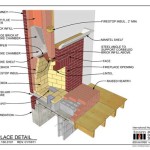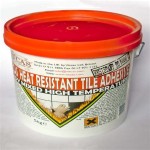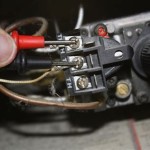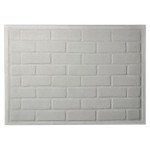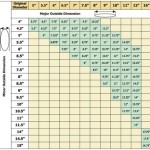```html
Cast Iron Fireplace Screens: Functionality, Aesthetics, and Historical Significance
Cast iron fireplace screens represent a marriage of functional necessity and artistic expression, offering a protective barrier against sparks and embers while contributing significantly to the aesthetic character of a fireplace and its surrounding space. These screens, crafted primarily from a durable alloy of iron and carbon, have evolved significantly over centuries, reflecting changing tastes and technological advancements. Their robust construction and inherent heat resistance have made them a staple in homes with traditional fireplaces, while their diverse designs ensure they can complement a variety of interior styles. This article will explore the key aspects of cast iron fireplace screens, encompassing their functionality, aesthetic appeal, and historical context.
The Primary Function of Cast Iron Fireplace Screens: Protection and Safety
The core purpose of a cast iron fireplace screen is to contain sparks, embers, and other airborne debris that can be ejected from a burning fire. Without a screen, these projectiles pose a significant fire hazard, potentially igniting nearby carpets, furniture, or clothing. A well-designed and properly sized cast iron screen acts as a physical barrier, preventing these dangerous elements from leaving the fireplace’s confines. This containment significantly reduces the risk of accidental fires and property damage.
The mesh or grate incorporated into the screen's design is crucial for its protective function. The openings in the mesh must be small enough to effectively block sparks and embers, while still allowing for adequate air circulation to sustain the fire. Cast iron, being a dense and heat-resistant material, is ideally suited for this purpose. It can withstand the intense heat generated by a fire without warping or degrading over time, ensuring consistent and reliable protection.
Furthermore, cast iron fireplace screens often provide an additional layer of safety by preventing accidental contact with the open flames. This is particularly important in households with children or pets, where curiosity or accidental bumps could lead to burns or other injuries. The screen creates a physical boundary that helps maintain a safe distance from the fire, mitigating the risk of direct contact.
Beyond fire prevention and personal safety, cast iron fireplace screens can also contribute to improved indoor air quality. By containing sparks and embers, they help prevent the release of smoke and soot into the living space. This is especially relevant for fireplaces that are not equipped with highly efficient ventilation systems. A screen can act as a supplementary barrier, minimizing the escape of particulate matter and improving the overall breathing environment.
Aesthetic Versatility: Design Styles and Decorative Elements
Cast iron fireplace screens are not merely functional objects; they are also decorative elements that can significantly enhance the aesthetic appeal of a fireplace and the surrounding room. Their design versatility allows them to seamlessly integrate into a wide range of interior styles, from traditional and rustic to contemporary and eclectic. The cast iron material itself lends a sense of solidity, permanence, and historical authenticity to any setting.
The decorative possibilities for cast iron fireplace screens are virtually limitless. Intricate patterns, ornate carvings, and detailed relief work can be incorporated into the screen's design to create a focal point that draws the eye and adds visual interest to the fireplace area. Common motifs include floral patterns, geometric shapes, animal figures, and historical symbols. The level of detail and complexity can vary greatly, depending on the desired aesthetic effect and the skill of the artisan or manufacturer.
The finish of the cast iron screen also plays a crucial role in its aesthetic impact. Traditional black finishes, often achieved through methods like painting or powder coating, are a classic choice that complements a wide range of fireplace styles. However, other finishes, such as antique bronze, polished brass, or even painted colors, can be used to create a more unique and personalized look. The finish can be chosen to coordinate with other metal elements in the room, such as lighting fixtures, hardware, or furniture accents.
The configuration of the screen itself can also contribute to its aesthetic appeal. Single-panel screens offer a clean and minimalist look, while multi-panel screens, such as bi-fold or tri-fold designs, provide greater flexibility and visual interest. These multi-panel screens can be adjusted to accommodate different fire sizes and viewing angles, while also adding a sense of depth and dimension to the fireplace area. Some screens also incorporate doors that allow for easy access to the fire for tending or refueling.
Ultimately, the aesthetic versatility of cast iron fireplace screens allows homeowners to choose a design that perfectly complements their personal style and the overall decor of their home. Whether the goal is to create a traditional, rustic, or contemporary ambiance, a cast iron screen can be a key element in achieving the desired look.
Historical Context and Evolution of Fireplace Screens
The use of fireplace screens dates back centuries, with early examples crafted from materials like wood, fabric, and metal. However, cast iron fireplace screens gained prominence during the Industrial Revolution, as advancements in metalworking technology made them more affordable and accessible. The increased availability of cast iron coincided with a growing emphasis on home decor and comfort, leading to the widespread adoption of these screens in homes of various social classes.
During the Victorian era, cast iron fireplace screens reached a pinnacle of decorative elaboration. Intricate designs, featuring elaborate floral patterns, classical motifs, and even scenes from literature or mythology, became commonplace. These screens were often seen as status symbols, reflecting the wealth and taste of the homeowner. The mass production techniques of the era allowed for a wide range of designs to be created, catering to diverse tastes and preferences.
In the 20th century, the design of cast iron fireplace screens evolved in response to changing architectural styles and aesthetic preferences. The Art Deco and Mid-Century Modern movements introduced more streamlined and geometric designs, reflecting a shift away from the ornate embellishments of the Victorian era. While cast iron remained a popular material, other metals, such as steel and brass, also gained prominence in fireplace screen construction.
Today, cast iron fireplace screens continue to be a popular choice for homeowners seeking a combination of functionality, durability, and aesthetic appeal. While modern designs may incorporate contemporary materials and manufacturing techniques, the timeless quality of cast iron ensures that these screens remain a fixture in homes with traditional fireplaces. The historical evolution of these screens reflects broader trends in design and technology, showcasing the enduring appeal of this functional and decorative element.
The enduring popularity of cast iron fireplace screens is a testament to their practical benefits and aesthetic versatility. They continue to provide a crucial safety barrier while simultaneously contributing to the visual appeal of a fireplace and its surrounding space. As long as fireplaces remain a cherished feature in homes, cast iron screens will likely continue to play a vital role in both their functionality and their design.
```
Old World Fireplace Screen Iron Accents

Valante Fireplace Screen Iron Accents

Acanthus Leaf Fireplace Screen 46 5 Wide Elegance Iron Accents

Vineyard Cast Iron Scroll Fireplace Screen Frontgate

Fireplace Screens Accessories Iron Accents

Large Cast Iron Scrollwork Fire Screen With Doors Black Plow Hearth

Sold At Auction Cast Iron Fireplace Screen

Large Crest Flat Guard Fireplace Screen Copper Plow Hearth

Vineyard Cast Iron Scroll Fireplace Screen Frontgate

Oxford 3 Panel Iron Fireplace Screen Com


